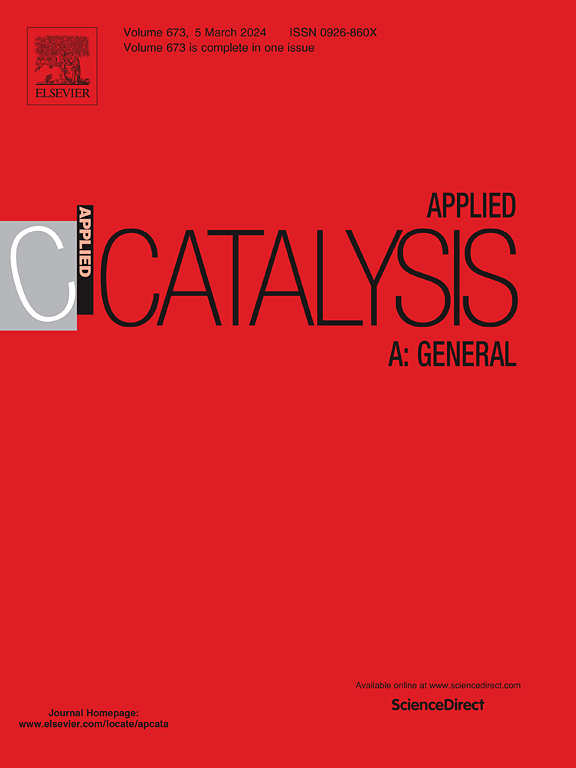FePO4在甘油脱水制丙烯醛中的催化性能及失活机理
IF 4.7
2区 化学
Q2 CHEMISTRY, PHYSICAL
引用次数: 0
摘要
采用磷酸铁(FePO4)作为高效固体酸催化剂,对甘油选择性气相脱水制丙烯醛进行了研究。系统研究了煅烧温度(400 ~ 700℃)对FePO4晶相演化及催化性能的影响。通过XRD、SEM、BET、XPS、NH3-TPD和Py-FTIR分析了晶体结构、表面性质和酸位分布。结果表明,600℃煅烧的FePO4对丙烯醛的选择性最高(93.2 %)。随着煅烧温度的升高,FePO4的晶型结构由钇铝石转变为红橄榄石,但这种结构变化对催化性能的影响很小。结果表明,在催化反应过程中,FePO4逐渐转化为Fe2P2O7是导致催化剂失活的主要因素。有趣的是,失活的催化剂可以通过原位氧化热处理有效地再生和恢复其性能。本文章由计算机程序翻译,如有差异,请以英文原文为准。
Catalytic performance and deactivation mechanism of FePO4 in the dehydration of glycerol to acrolein
Iron phosphate (FePO4) was employed as a highly efficient solid acid catalyst for the selective gas-phase dehydration of glycerol to acrolein. The influence of calcination temperature (400–700 ℃) on the crystalline phase evolution and catalytic performance of FePO4 was systematically investigated. Crystal structure, surface properties, and acid site distribution were analyzed via XRD, SEM, BET, XPS, NH3-TPD, and Py-FTIR. Results demonstrated that FePO4 calcined at 600 ℃ showed the highest selectivity (93.2 %) to acrolein. Increasing the calcination temperature induces a phase transition in FePO4 from tridymite to rodolicoite structure, though the structural change has a minimal impact on the catalytic performance. Furthermore, it is demonstrated that the progressive transformation of FePO4 into Fe2P2O7 during catalytic reaction represents the primary factor contributing to catalyst deactivation. Interestingly, the deactivated catalyst can be effectively regenerated and its performance restored via in-situ oxidation heat treatment.
求助全文
通过发布文献求助,成功后即可免费获取论文全文。
去求助
来源期刊

Applied Catalysis A: General
化学-环境科学
CiteScore
9.00
自引率
5.50%
发文量
415
审稿时长
24 days
期刊介绍:
Applied Catalysis A: General publishes original papers on all aspects of catalysis of basic and practical interest to chemical scientists in both industrial and academic fields, with an emphasis onnew understanding of catalysts and catalytic reactions, new catalytic materials, new techniques, and new processes, especially those that have potential practical implications.
Papers that report results of a thorough study or optimization of systems or processes that are well understood, widely studied, or minor variations of known ones are discouraged. Authors should include statements in a separate section "Justification for Publication" of how the manuscript fits the scope of the journal in the cover letter to the editors. Submissions without such justification will be rejected without review.
 求助内容:
求助内容: 应助结果提醒方式:
应助结果提醒方式:


